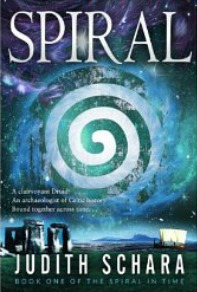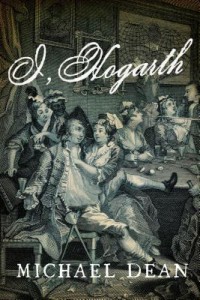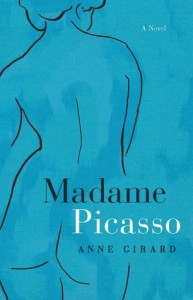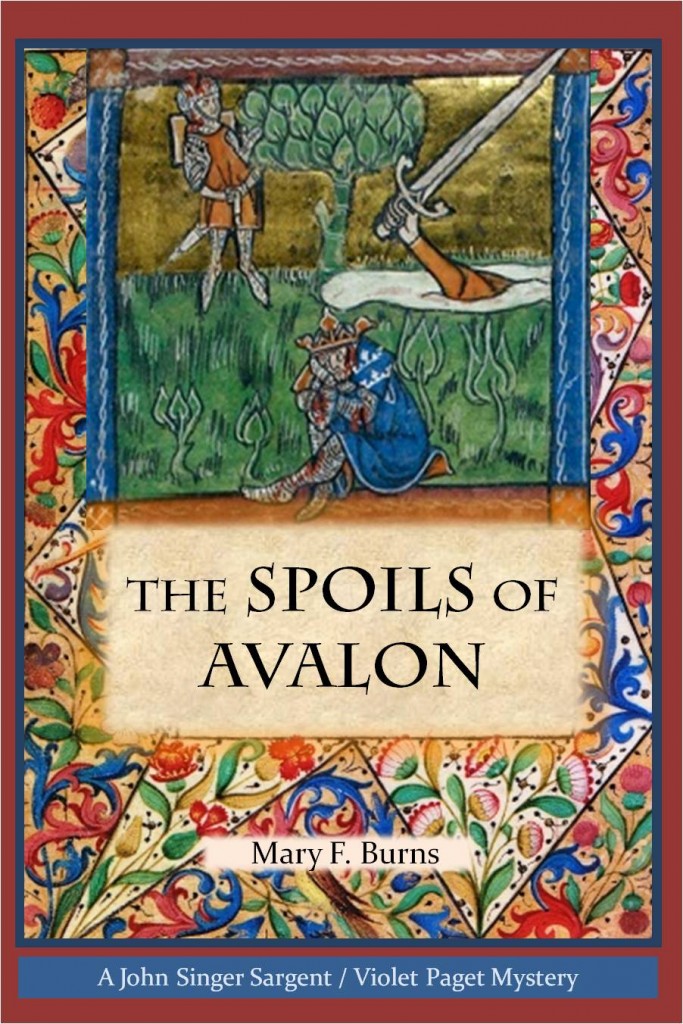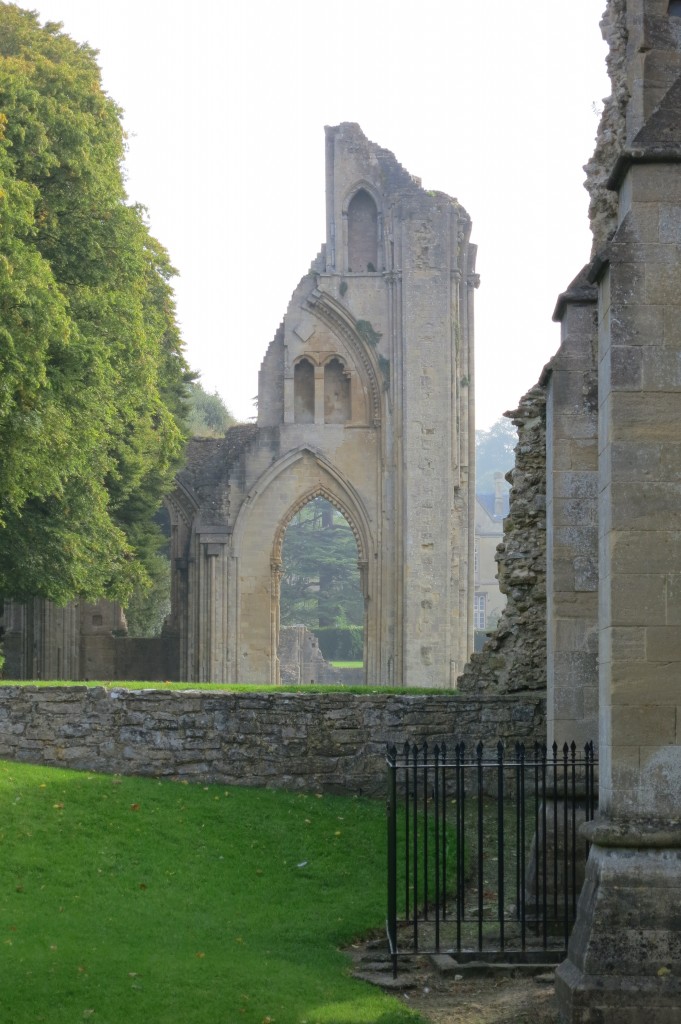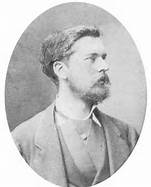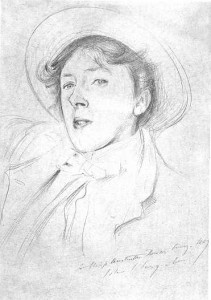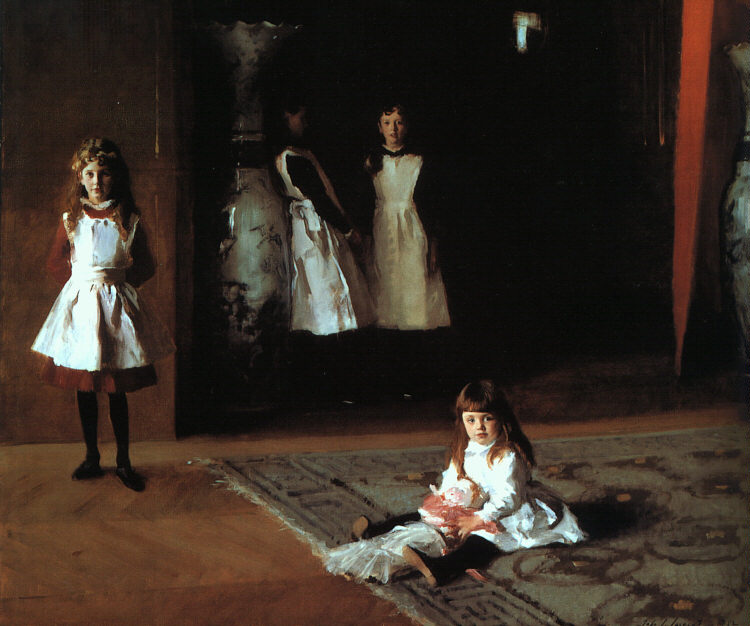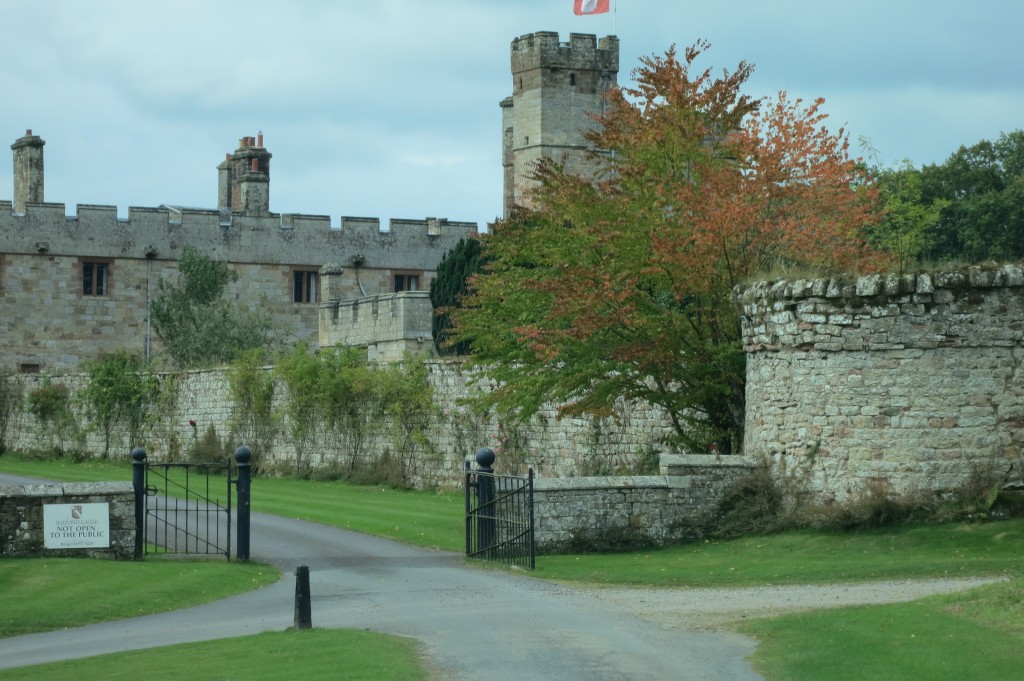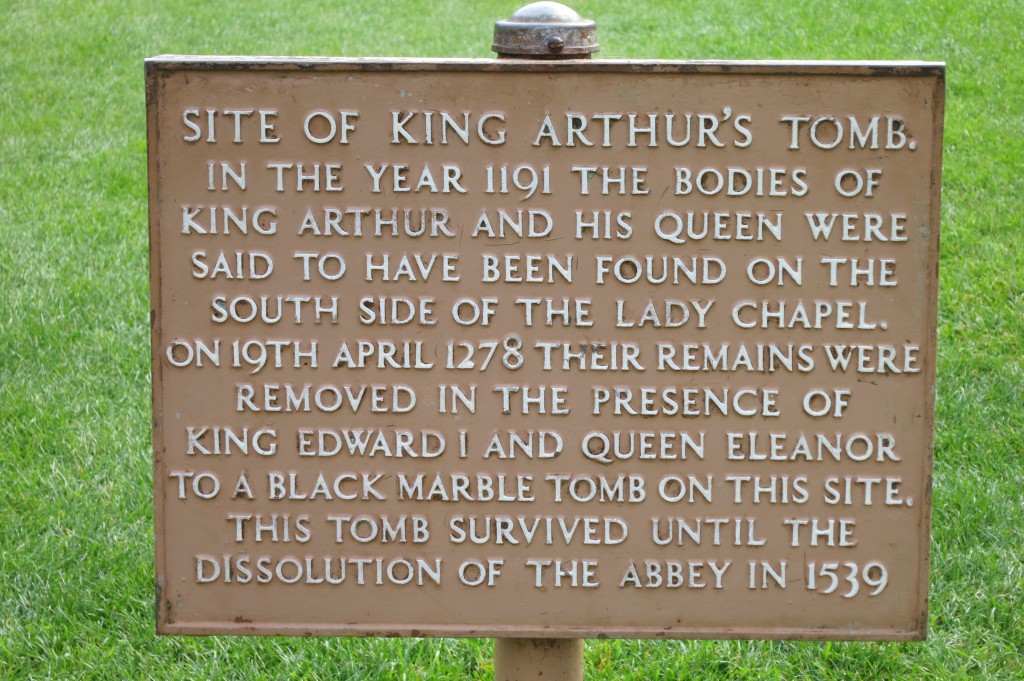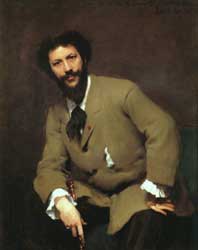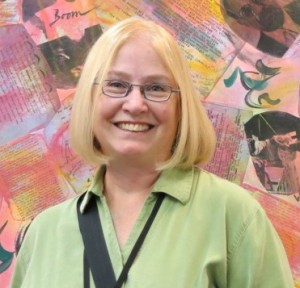This is my 2014 list! These novels all in some way brought joy, intrigue, further understanding and richness to my life. I can’t thank the authors enough for your efforts to bring these stories to life, to us, to your adoring readership!!! Thank you! Endless Gratitude!!!
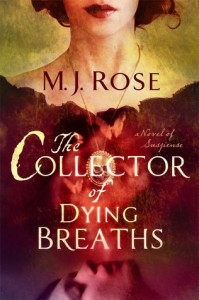 The Collector of Dying Breaths by M.J Rose
The Collector of Dying Breaths by M.J Rose
For sheer fast -paced memorizing and exotic atmospheric reading I loved this novel. With scenes full of inspired and unforgettable images like butterfly footprints and evocative settings and characters, one can’t help but love this rich and ambient novel. And I loved how Rose ended with a clear resolution to the question of reincarnation, bringing all the novel’s threads seamlessly together, and on a positive note — very Buddhist! I also loved the wisdom woven throughout and I highlighted a lot of passages. I think it is a stunning time-slip novel that crisscrosses time as a sixteenth-century monastery trained perfumer, René le Florentin, and a modern day mythologist, Jac L’Etoile, seek the razor edge between “potion and poison, poison and passion…past and present.” I highly recommend this engrossing read.
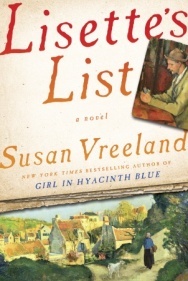 Lisette’s List by Susan Vreeland
Lisette’s List by Susan Vreeland
Thoughtful, well-researched, carefully-rendered and moving, these are the words this novel conjures. With a scene mid-book that touched on the universal, giving me reason for pause and to deeply contemplate, what all great literature strives for. Vreeland’s mastery of language and descriptive images are on every page. The first word that comes to mind after reading the book: Exquisite. I loved Vreeland’s characterization of Parisian and Provençal life, along with learning about Marc Chagall and his wife’s plight and his thoughts on the effects of war on art and artists and culture. Throughout the novel I enjoyed the reflections and explanations of art materials and works and the meanings behind paintings such as Picasso’s “Guernica” and “Weeping Woman”. For anyone who appreciates vivid settings, specific time period details, characters and writing with soul and heart and a focus on art, you’ll love and revel in this novel. Once again, Vreeland has created an important story, one written as finely as a Pissarro painting, but in the rich colors of Cezanne’s palette.
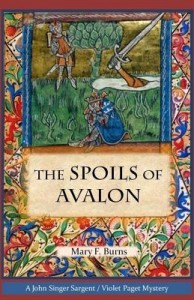 The Spoils of Avalon by Mary F. Burns
The Spoils of Avalon by Mary F. Burns
This unique two time period historical mystery is told through distinct characters and voices, all accomplished through polished and witty prose. Burns to my blessed surprise and honor, asked if I’d write an endorsement for this novel, my very first ever which marks a milestone for me. This revealed, here’s what I have to say about The Spoils of Avalon:
“An artist, a writer, a murder, a mysterious tome, a dissolving time, a crime, Arthurian legends, ancient saints books and bones. Burns’ prose drives and is sublime, with characters and settings that live on in your mind. This is an original historical mystery connecting the Age of Industry with the Age of Miracles.”
The chapters alternate between late eighteenth-century England’s Age of Industry, opening with a reunion of American portrait painter John Singer Sargent and his lifelong British writer friend Violet Page, both of whom are called upon to unravel a disturbing murder. Then we are transported back to the sixteenth century, the Age of Miracles, during King Henry the VIII’s reign and at the crucial moment when he was disbanding the Church island-wide. Burns takes us into the secluded stone chambers and the souls of the clergy in one of the last great standing monastery’s heart-wrenching saga of dissolution. Magically Burns weaves these seemingly disparate time periods and stories in the most astonishing way! Truly her storytelling is masterful and imaginative, keeping you quickly turning the page!
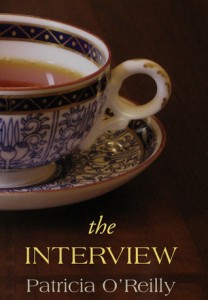 The Interview by Patricia O’Reilly
The Interview by Patricia O’Reilly
In this fascinating time-slip read which investigates the lives of Irish designer/lacquer painter Eileen Gray and “The Sunday Times” reporter/art aficionado Bruce Chatwin, the story recalls a real intimate exchange between the two important figures. The characterizations of both personas was exemplary and the storytelling deep and insightful, with many wonderful sentences and original metaphors. If you like to read well-written books that explore the heart and soul of innovative art and artists you’ll revel in this novel. Eileen Gray was creating in Paris at the same time as Picasso and working also in the south of France. Gray’s works and story are world-class. The Interview shares with us the behind-the-scenes and looks into the heart of the courageous artist’s life story of Eileen Gray. I loved learning about Gray and imagining this moment in time when Gray was at the end of her artistic life and Chatwin interviewing her, and what in the end he decides to report on.
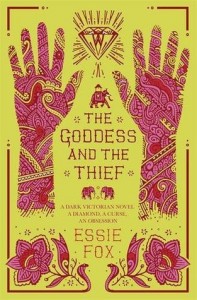 The Goddess and the Thief by Essie Fox
The Goddess and the Thief by Essie Fox
This novel captured my attention because of its ancient Hindu lore reference. I can’t resist a novel that touches on the pantheon of Hindu Goddesses and Gods! I found the British Victorian time period perspective fascinating, along with the spiritualist medium thread. I loved learning about the priceless and sacred Koh-i-Noor diamond, claimed by the British Empire at the end of the Anglo-Sikh wars and the story of its original owners. It was said to be a stone both blessed and cursed, exerting its power over all who encounter it. What unravels in the novel is the story of a living maharajah who is determined to reclaim his rightful throne and discover the secrets of eternity, a widowed queen who hopes the jewel can bring back her husband’s spirit. All while India born, British Alice finds herself in midst of others madness over the stone and must discover a way to regain control of her life and fate. This is a sensual Victorian novel of theft and obsession and spirit.
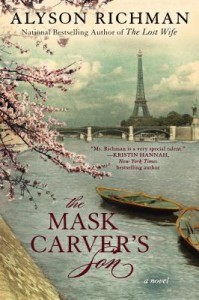 The Mask Carver’s Son by Alyson Richman
The Mask Carver’s Son by Alyson Richman
If you want to be floored, left with your jaw dropped in awe because of original and exquisite metaphors and similes this art-based novel is for you! Beginning and set in 1890 Japan is the story of Yamamoto Kiyoki, son of a famous Japanese mask carver who longs to embrace oil painting instead of his family’s traditional craft. Yamamoto dreams of studying in Paris with the inspiring and vibrant Impressionist painters.
With gorgeous, intimate and evocative scenes set in various places in Japan and Paris one longs to travel back to this time. And one feels intensely the profound struggle between honoring tradition and family and the longing of the adventurous creative heart and the price paid for following one’s dreams. What can one do when you knows in the depths of your heart that you must break away from tradition? And how to honor one’s father, and yet fulfill one’s own destiny?
I was immediately drawn into this time-slip novel and found I couldn’t put it down. I was excited each evening to dive into the book and to see where it went. The story goes between 2006 England and the Iron Age, time periods I’m not usually drawn to. I found the story line fascinating, along with the time period details. In addition, there are some wonderful metaphors and similes throughout the book. In 2006 England, a secret society of Druids on accident expose an ancient burial ground, a Celtic scabbard is found that hints at more treasures possibly abound. Troubled archaeologist Germaine O’Neill is called to the site to investigate, and in an attempt to salvage her career she takes a hasty risk with repercussions, but uncovers an unknown chamber dating back to the Iron Age of a Celtic queen. O’Neill’s discovery alters her life and possibly costs her it while discovering a new twist to the history of prehistoric England. After an accident, O’Neill is in a altered state and travels back in time to the fifth century, entering the life of Sabrann ap Durot—the woman whose burial O’Neill has just discovered and her far distant ancestor, for the two women are joined across time by identical mitochondrial DNA. Sabrann posses the special gift of “sight” and is feared for it, and will be plagued and possibly saved by her clairvoyance? The protagonist Germanie/Sabrann is interesting and intriguing, along with her yet to be revealed life purpose (of which I suspect with be reveal in the forthcoming sequel!). The story is told in the omnipresent voice and it takes the reader eventually all the way to Carthage of old. I’m already looking forward to the next book in the series! I recommend this novel if you like female protagonists, exotic settings and characters, and the idea of genetic destiny.
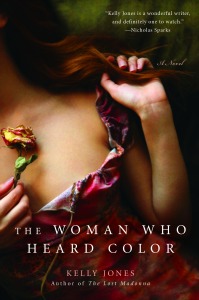 The Woman Who Heard Color by Kelly Jones
The Woman Who Heard Color by Kelly Jones
This is a well-told story which left me in tears at a couple of points…that says a lot! When “art detective” Lauren O’Farrell sets out to unravel and potentially recover works of art stolen and absconded with by the Nazis during World War II, she comes into contact with elderly Isabella Fletcher. Is Isabella the daughter of a renowned German art gallery dealer, Hanna Fleischmann, whose life story holds mysteries and quite possibly the answers Lauren seeks, decades after masterpieces by modern artists have gone missing, the likes of Wassily Kadindskys, Franz Marcs, Gabriele Munters, Otto Dixs and many more. Through alternating chapters set in New York City in 2009 and back to between the two World Wars and through Hilter’s reign in Germany, Jones exposes the cutting-edge German art scene before World War II, the sweeping changes the population was confronted with, and the horrors that followed. And how modern art and artists were cast as “degenerative” and what that meant and what was lost. In this touching and tearjerking novel one comes to understand how destructive darkness was wreaked upon modern art in Germany during World War II and what would eventually be lost forever and what would be saved, but at great personal risk and costs. Through Hanna’s and Isabella’s stories we learn and see how those who were gifted and talented were forced or coerced to serve Hitler and make decisions none of us hope to ever have to make for life, for family and for the freedom to create what the spirit calls forth.
In this novel Dean flawlessly reveals the rogue risqué life story of eighteenth century, British painter and engraver William Hogarth. Hogarth defined his period with works such as “Gin Lane” and “The Rake’s Progress”, depicting the ebullience, enjoyments and social iniquities of London. Dean takes us from Hogarth’s childhood spent in a debtor’s prison, his struggle to make a name for himself, his time as England’s preeminent portrait painter, his fight for artists’ rights instigating the Copyright Act, his unfortunate brush with politics, and to his deathbed in his wife’s arms. Told in the first person through the eyes and heart of the artist we come to learn Hogarth’s deepest desires, his frustrations, his triumphs, his downfalls. Dean brings to life Hogarth and his epoch, blending facts with fiction, revealing the man behind his famous and effecting work of art. Recommended.
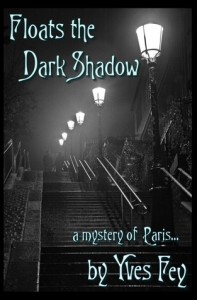 Floats the Dark Shadow by Yves Fey
Floats the Dark Shadow by Yves Fey
This is a historically fascinating novel with macabre moments set during the Belle Époque era in Paris. Children are disappearing in the “City of Lights”, as American born painter Theodora Faraday struggles with her painting and illustrating poems for the Revenants, a group of poets inclusive of her cousin, Averill, with whom she’s romantically infatuated. When Inspecteur Michel Devaux suspects the poets are somehow tied to the disappearance of the innocent youths, Theo’s world goes starless. Fey takes us into the underbelly and mysterious of Paris: poetry readings in the catacombs, Tarot card fortunetellers, the asylum, a black Mass, and could it possibly be true that France’s most evil historic serial killer Gilles de Rais from the fifteenth century has somehow reincarnated?
Paris is exquisite, beautiful, but not all its inhabitants embody and live for virtuous elegance, others celebrate wickedness, live for sot obsessions, and morbid delusions. If you are looking for an original and the shadow-side of the Belle Époque era this novel is if for you!
Love stories have inspired art and literature since time immemorial, and Girard’s novel marries both, in telling the untold life-altering love affair between Eva Gouel and artist Pablo Picasso at the end of the colorful Belle Époque era in Paris, France. Eva, an aspiring seamstress, who will become a designer, a creative in her own right, works behind-the-scenes in the famous Moulin Rouge under the adopted name of Marcelle Humbert. One evening, she spies the rising star Picasso in a group of show goers and is Instantly entranced by the painter’s persona. A chance meeting at an art exhibit brings them into each other’s aura, where a lifelong connection begins, but one with complicated obstacles to surmount and navigate in order for them to realize their love: doubt, another woman, a protective group of artist friends, illness and death.
Girard takes us into the cabaret and cafés, the artist’s studio and chic salons, countryside hideaways, under the sheets, and into the unexposed chambers of the heart of twentieth-century artist icon Pablo Picasso; revealing a compassionate, loving and devoted man behind his notorious womanizing character. Through the story, we learn how Eva’s relationship with Pablo affected and inspired his works, visibly noted as Picasso left the Rose period (prior relationship with Fernande Oliver) and evolved into the epicenter of his Cubist era (involved with Eva Gouel). There’s stability, a confidence, a grounded structure in Picasso’s Cubism during his involvement with Eva, reflecting those attributes she quite possibly brought to the artist’s life. Also, the novel explores a plausible artistic influence she, whom he called his ‘Ma Jolie’, may have had on him too, which I really enjoyed speculating about. Madame Picasso is a love story exploring how passion sparked form and was recorded in masterful works of art.
These novels are currently on my highly anticipated 2015 reading list, some are newly released or soon-to-be-released…delicious….can’t wait! Euphoria by Lily King, The Witch of Painted Sorrows by M.J Rose, The Rebel Queen, by Michelle Moran, Rodin’s Lover by Heather Webb, The Lady with an Ostrich-Feather Fan by Frederick R. Andresen, Vanessa and Her Sister by Pirya Parmar, Paris Red by Maureen Gibbon, The Tapestry by Nancy Bilyeau, Burning Bright by Tracy Chevalier (released 2008), and Race for Tibet by Sophie Schiller.
And already in print novels part of the ongoing “Love of Art in Historical Fiction Series”: The Memory of Scent by Lisa Brukitt, Fugitive Colors by Lisa Barr,The Creation of Eve by Lynn Cullen, The Detour by Andromeda Romano-Lax.

